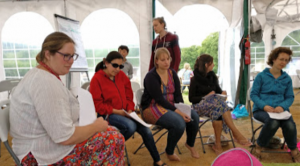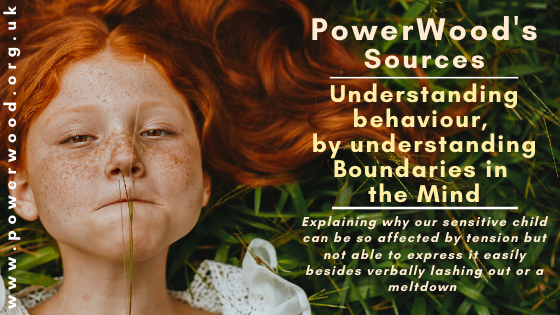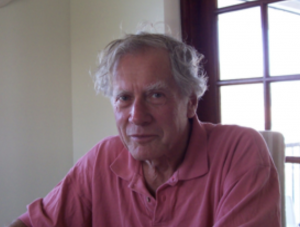Understanding Behaviour
by Understanding Boundaries
The concept of The Boundaries in the Mind was developed by psychoanalyst Ernest Hartmann from his observations of the personality characteristics of frequent nightmare sufferers and he developed the concept of the Thickness of the Boundaries in the Mind.
“Thickness of boundaries represents a neglected dimension of personality, one that can help us understand aspects of our lives that no other measure can explain.” Ernest Hartmann (Source – Ernest Hartmann’s original own website)
Ernest Hartmann
Dr Ernest Hartmann (1934 – 7 August 2013) was an Austrian-American psychoanalyst, sleep researcher and a professor of psychiatry at Tufts University School of Medicine, past president of the International Association for the Study of Dreams, and first Editor-in-Chief of Dreaming.
One of the world’s foremost researchers on dreaming, sleep, and personality, he authored nine books and 350+ articles on these subjects.
Hartmann concluded boundaries are everywhere in both our internal and external world.
(Source – Ernest Hartmann’s original own website)
 What are Boundaries?
What are Boundaries?
“The basic underlying notion is a fairly obvious one. No matter how we think of the content of our minds — whether we think in everyday terms of thoughts, feelings, memories; in cognitive psychology terms of perceptual, semantic and memory processes (or “modules”); or perhaps in psychoanalytic terms of ego, id, superego, defenses, etc. — we are speaking of parts, or regions or processes, which in some sense can be considered separate from one another, and yet which are obviously connected. The boundaries between them are not absolute separations. The boundaries can be relatively thick or solid on the one hand, and relatively thin or permeable on the other hand.” (Source page 2) Ernest Hartmann
Understanding Ourselves and Our Children
The concept of the Thickness of the Boundaries in the Mind has been and is very helpful in understanding in more depth the behaviour and differences in ourselves and our children.
Where are we on the Boundaries Spectrum
Whether we have more Thin or Thick boundaries we are all on the Boundaries Spectrum somewhere. The following descriptions by Hartmann of a person with extreme Thick and one of a person with Thin Boundaries are from the far limits of the scale. Most of us are somewhere in between, a mixture of thin and thick boundaries, so we have access to the advantages of both and are not so influenced by the disadvantages. It gives a sense of the thick versus the thin personality, which has been underpinned by the Boundaries Questionnaire which you can also fill in yourself (scroll down).
Thick Boundaries Characteristics
A person who has very thick boundaries in all senses would be someone with a sharp sense of focus, who can easily concentrate on one thing while ignoring others. This person does not experience synesthesia, keeps thoughts and feelings entirely separate (“I don’t let my feelings get in the way of my thinking”), and is absolutely clear about when s/he is awake, or asleep or dreaming, experiencing no in-between states.
This person has a clear sense of the separation of past, present, and future (“that was then, this is now”), has a very definite sense of space around him/herself (“this is my space, this is yours”), and will have a very clear, delineated sense of sexual identity (“I am a man, you are a woman, viva la différence”), group identity (“this is my group, we do such and such; other groups are totally different) and will tend to see the world in terms of black versus white, us versus them, good versus evil. (Source)
Thin Boundaries Characteristics
At the other extreme, a person with thin boundaries in all senses may experience synesthesia, will tend to let a lot of sensory material in at once, and may have difficulty focusing on one part of the input. This person will tend to be aware of thoughts and feelings together (“I can’t imagine a thought without a feeling”), and will often experience states of being half-awake and half-asleep, or will become deeply immersed in daydreaming or in reverie, so that sometimes the boundaries between real life and fantasy may be unclear.
There will be less sense of clear body boundaries and personal space. This person may be very aware of the past and have it blend with the present (“I am grown-up, but in a lot of ways I’m still a child”). Similarly, this person will accept mixtures in sexual identity (“I am a man, but there’s a lot of feminine in me too”).
He or she will not feel solidly a member of one group, but rather be an individual taking part transiently in many groups, or perhaps a “citizen of the world.” In judgments or opinions about the world, this person will tend to think in terms of shades of grey, rather than black and white (“it all depends, s/he’s good in some ways and bad in others,” “it’s different at different times,” and so on). (Source)
How OE and Boundaries might interact
OE and Boundaries are two different theories that can be us complementarily in understanding ourselves and our children.
 Combination Emotional OE and Thin Boundaries
Combination Emotional OE and Thin Boundaries
People with thinner boundaries who also have an Emotional OE can be even more highly emotionally reactive.
They might have difficulty in getting in charge of their emotional OE due to the even heightened intensity of their experiences and feel often absolutely overwhelmed by their own and others feelings and emotions and feel unrealistically responsible for others well-being, not knowing how to stop it from happening, often feeling exhausted (a depleted Baseline) and being easily triggered in their stress response and entering the Cycle of Emotional and Sensory Overload.
They experience their emotions often as their only option, lack of choice, and can be pleasantly surprised that they can learn to steer their emotional OE energy towards self-chosen goals for themselves and their family.
Combination Intensity and Thick Boundaries
Those with thick boundaries of the mind, who don’t have the same emotions and thus physiological reactions (e.g. increased heart rate) but they suppress or detach from the feelings. On the outside, they may have a calm demeanour.
Because of the Thicker Boundaries in the Mind, we or our children might be much affected by internal and/or external tension or energy but are not able to express it easily beside a non-verbal expression or an explosion. On the surface, it might seem that they are more easily stuck in the Cycle of Emotional and Sensory Overload but in fact, they need help to exit the Cycle of Emotional and Sensory Overload and develop tools that will help to regulate their emotional reactions.
When we or our children have a combination of intensity and Thick Boundaries we need support in moving more smoothly through boundaries, travelling more easily from one area in the brain to another area, without retriggering our Cycle of Emotional and Sensory Overload.
When Stressed
If we are children or adults with a Thicker Boundaries in the Mind and we are triggered in a stress response, we will find it harder to get out of the Cycle of Emotional and Sensory Overload due to the difficulties to process experiences because we need the ability to move to other areas in the brain to be able to do so.
Tension under the surface might be played out with inappropriate behaviour. We or our child can become an Anxiety Receptor e. g. laughing during a funeral, saying silly comments in a tense social situation, being absolutely all over the place etc.
Emotional Focus significant Difference
Individuals with Emotional OE and Thin Boundaries have a tendency to focus on others, while individuals with the same level of intensity combined with Thicker boundaries in the Mind often are concerned with how the tension affects them, and are not concerned with how it affects others. Therefore sometimes they might even come across as lacking empathy due to this focus on themselves, but they might be compassionate when not overwhelmed.
Other Perspective
The concept of Thick boundaries can help us explain behaviour from a different perspective and show us another way to support ourselves or our children by having a greater understanding leading to more compassion.
Boundaries: A New Way to Look at the World
Ernest Hartmann published an easy to read book based on his theory of the Thickness of the Boundaries in the Mind, Hartmann, E. (2011) Boundaries: A New Way to Look at the World. Santa Barbara CIRCC. You can read more about it on our Free eBooks and Resources Page.
You’re very welcome to fill in the FREE Boundaries Test for yourself or your child.
Emotion Regulation
Multilevel Emotion Regulation Theory (MERT) is a holistic theory developed by Simone de Hoogh. The theory explains how neurodiverse (young) individuals and parents of neurodiverse children can develop emotional regulation skills and direct their energy towards self-chosen goals, and contribute to society.
PowerWood’s Community
Find understanding, tools and strategies that work in an understanding, respectful and compassionate Community.
Book a FREE Introductory Talk with a Professional*
You can read more about PowerWood’s Consultancy Sessions, the Benefits of a Free Introductory Talk and PowerWood’s Consultancy Services Tiered Fee Structure.



